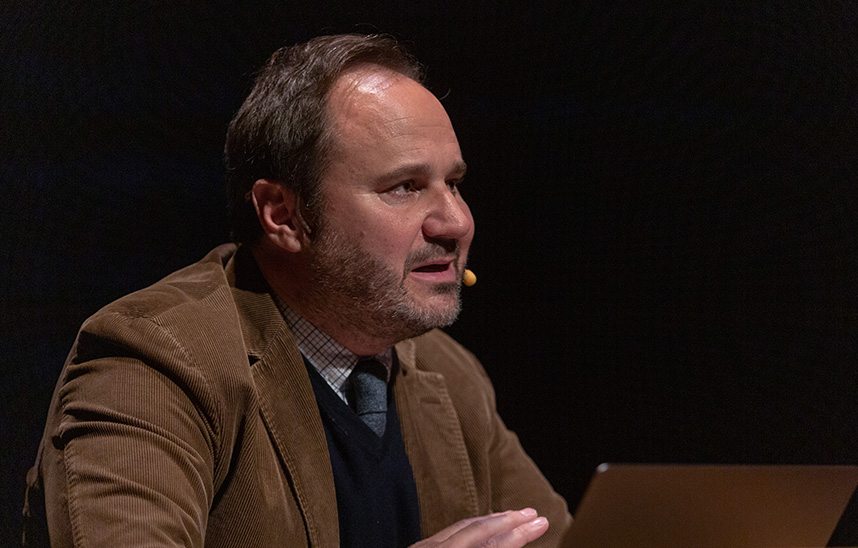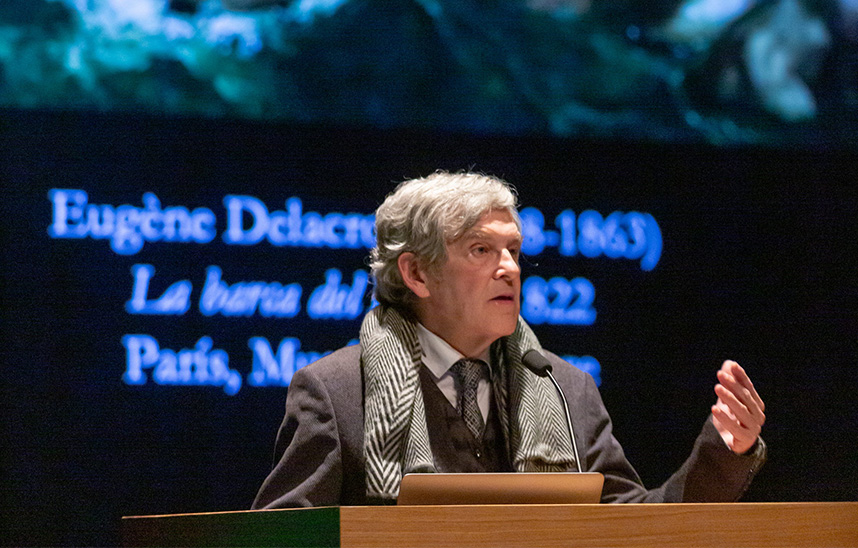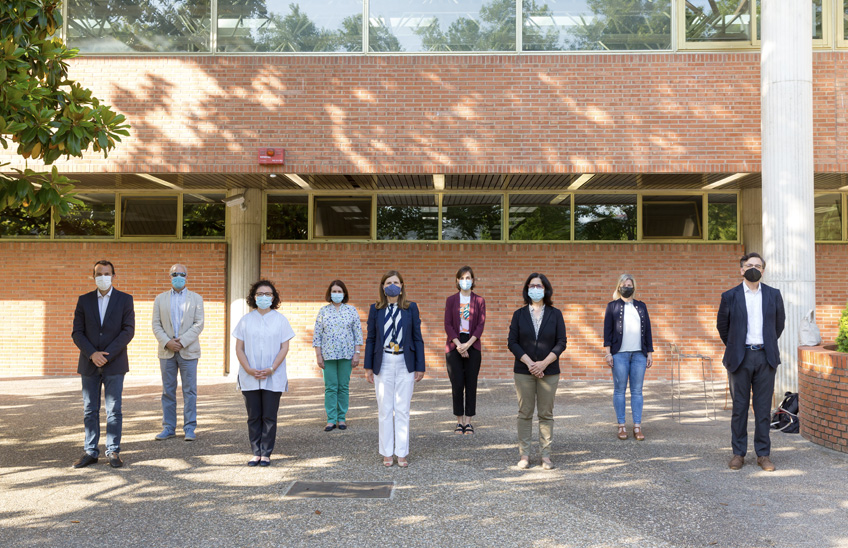"When Rubens portrays someone, he tells a story."
Art historian Jaime García-Máiquez gives the last lecture of the series organized by the Friends of the Prado Museum Foundation at the University of Navarra.

PhotoManuelCastells/
20 | 02 | 2023
Jaime García-Máiquez, art historian and technician of the Technical Documentation Office of the Prado Museum, has been in charge of giving the fourth and last session of the lecture series "Francisco Calvo Serraller" that the Friends of the Prado Museum Foundation organizes at the University, in partnership with the School of Philosophy and Letters of the academic center.
In his discussion paper, entitled "Effigy and fable. The portraits of Rubens", the expert presented this facet of the artist in the auditorium of the University of Navarra Museum. He explained that when Rubens paints a historical or mythological character, "he does it because that story concerns him, he thinks it can enrich the portrayed and, through him, all of us". That need to tell "made him develop a narrative rhetoric that influences all his portraits.
García-Máiquez began by showing one of the first portraits by Rubens, "Portrait of a man, possibly an architect or a geographer" (1597). In his speech, he pointed out to the audience some clumsiness, such as a signature on the back, or the disproportionate size of the hands of the character, which are but a advertisement of what will be his later grandiloquent style. With this work, Rubens "expresses more than nature asks of him. The physical elements tell something of the subject's personality," he explained. Even the hair of the beard, as the historian pointed out, "becomes a psychological resource ". In "The Family of Jan Brueghel the Elder" (1613-15), Brueghel himself seems to be left out: "The woman and the two children create a perfect triangle, but the father shows up, breaking that harmony". In this sense, the speaker revealed that, indeed, Brueghel was painted later, above the composition that the painter planned. For García-Máiquez, therein lies Rubens' genius: "Picasso used to say that when he finished a work and saw that it was impeccably composed, he would change something so that the distortion of the perfect geometry would stimulate the viewer's emotion." With this painting, Rubens did the same "in a masterful way".
As the expert explained, between 1603 and 1604, Rubens resided in Spain, where he painted around forty paintings, or in other words, about one painting per week. Among them is the famous "Equestrian Portrait of the Duke of Lerma" (1603), which he painted for the King's favorite. During that time, Rubens' path crossed that of the young Diego Velázquez, then court painter to Philip IV. The speaker denied the popular belief of a rivalry between them, since there was a generational difference that prevented them from seeing each other as rivals. "The reality would be quite the opposite," he said.
On the other hand, primers -the color base that is applied before painting- are, according to the historian, an intimate part of the creative process. "Velázquez always did them in red until he saw how Rubens painted in Madrid," García-Maiquez said. As he pointed out, the Dutchman preferred white primers, a technique that the young painter began to imitate. Thanks to X-rays and pigment analysis carried out on Velázquez's paintings, it was possible to observe how he repainted his red primers in white and continued using that color.
As attendees were able to discover, even more amazing is the story of the "Portrait of a Man," a painting attributed to Rubens. X-rays showed red primers covered in white like the ones Velázquez made after he discovered this method. In addition, underneath the unknown man, García-Máiquez indicated that a portrait of the infant Don Carlos could be hidden. For the expert, Velázquez probably painted a portrait of the infant that, for some reason, was discarded. Then, Rubens recovered it and painted over it. "Such insolence does not occur in an environment of skill, but of friendship," stated the speaker.
To close the series, Julia Pavón, dean of the School of Philosophy and Letters, thanked all the speakers of this edition and the professors in charge of the presentations, the Fundación Amigos del Museo del Prado, the Museo Universidad de Navarra for hosting the series once again, Viscofan, sponsor of meeting, the Fundación Diario de Navarra and the attendees who once again have opted to approach the beauty of art that houses the Museo del Prado.




